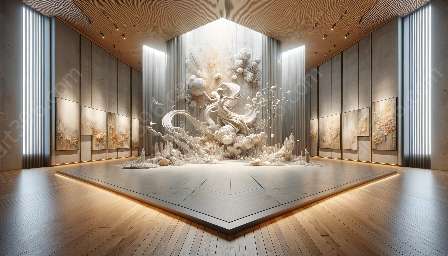Site-specific art installations have become powerful tools for political activism, creating thought-provoking experiences that engage communities and challenge social norms. These installations have the ability to transform public spaces and shape political discourse, ultimately eliciting social change and awareness.
The Influence of Site-Specific Art Installations on Political Activism
Art installations that are specifically created for a particular site have the potential to impact the surrounding environment in a profound way. When strategically placed within public spaces, these installations can become visual representations of political activism, capturing the attention of passersby and initiating crucial conversations about pressing social issues.
Engagement with Public Space
Site-specific art installations serve as a form of direct engagement with public space. By choosing specific locations for their work, artists can draw attention to areas that are often overlooked or underrepresented. This act of reclaiming public space for political expression and activism can disrupt the status quo and empower communities to express their own narratives.
Shaping Political Discourse
Through their immersive and often provocative nature, site-specific art installations have the potential to challenge conventional political discourse. By presenting alternative viewpoints or narratives, these installations can disrupt existing power dynamics and foster critical dialogue around social justice and equality.
The Role of Art Installations in Fostering Social Change
Many site-specific art installations are explicitly created with the goal of sparking political activism and social change. By provoking emotional responses and encouraging introspection, these installations can inspire individuals to take action and advocate for meaningful societal transformation.
Community Engagement and Empowerment
Art installations often involve local communities in their creation and interpretation, fostering a sense of ownership and empowerment. By involving community members in the artistic process, artists can create spaces that reflect the diverse voices and experiences of the people they represent, ultimately contributing to the mobilization of collective action.
Art as a Tool for Advocacy
Art installations can serve as powerful advocacy tools, amplifying the voices of marginalized communities and advocating for social justice. By creating visually striking and emotionally compelling experiences, artists can effectively communicate the urgency of political issues, ultimately mobilizing support and solidarity for various causes.
Conclusion
Site-specific art installations play a significant role in shaping political activism and mobilizing communities towards social change. Through their ability to engage the public, challenge established power structures, and advocate for marginalized voices, these installations serve as catalysts for meaningful dialogue and action, ultimately contributing to the reshaping of public spaces and collective consciousness.

